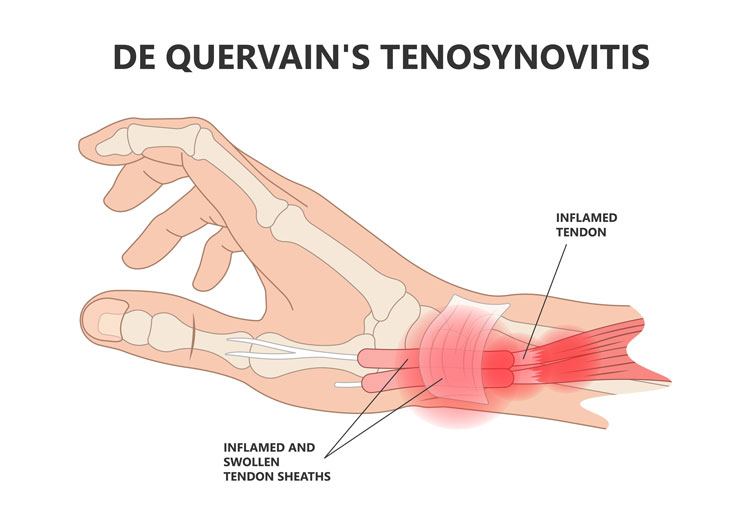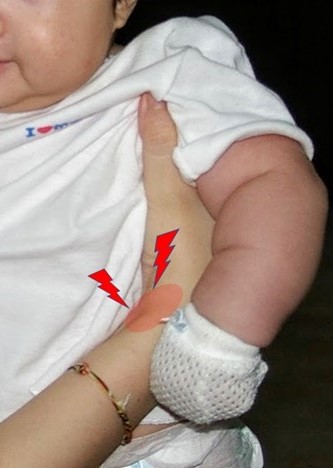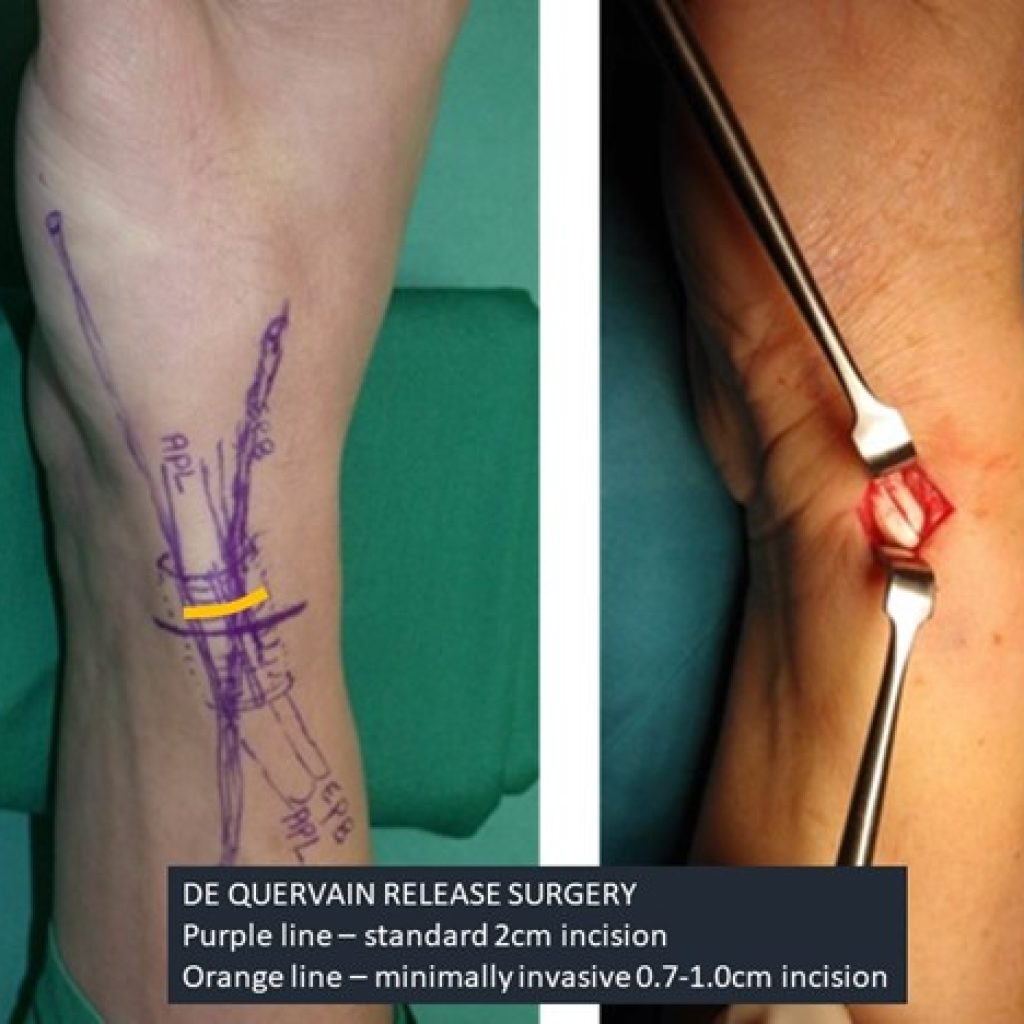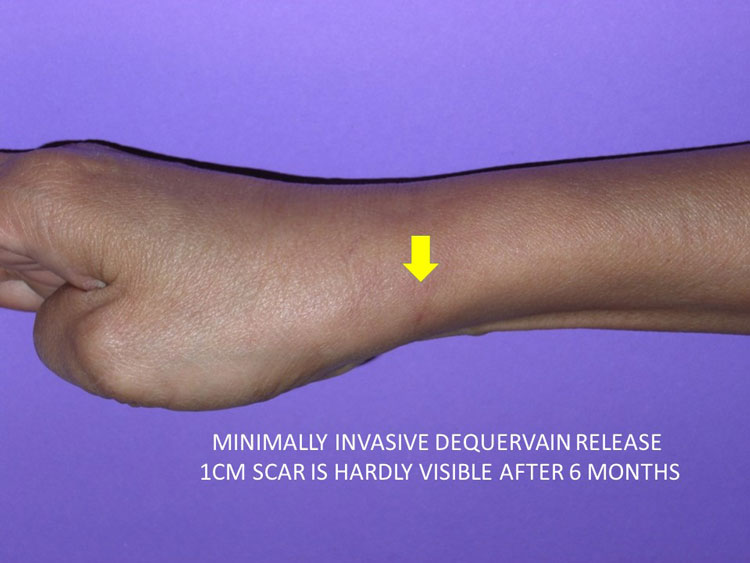What is DeQuervain’s Tenosynovitis?
DeQuervain’s Tenosynovitis is a very common cause of pain in the thumb and wrist. This is also known as washer woman’s wrist. DeQuervain’s tenosynovitis is a painful condition affecting the tendons on the thumb side of your wrist. It hurts when you turn your wrist, grasp an object or when you try to pinch an object. It can also cause a clicking sensation when you move the thumb. Pinching, grasping and other movements of your thumb and wrist aggravate the pain.
The tendons that move the thumb away from the other fingers pass through a tunnel at the side of the wrist. This tunnel keeps the tendons close to the bone when the thumb moves. In DeQuervain’s, the tissue that forms the wall of the tunnel becomes thickened, narrowing the tunnel and restricting the tendon movement. The friction of the tendons rubbing against the narrowed tunnel each time it passes through makes them become more swollen and stiffer, making thumb and wrist movement painful.
How Do I Know I Have it?
In the early stages, you may just have some pain in the wrist near the base of the thumb off and on, especially with thumb movements or wrist movements. Most people will ignore this and carry on with their activities as normal.
As it gets worse, you will notice that the pain in the wrist is more frequent and affects simple activities like brushing your teeth, opening doors or bottles, and reaching behind the back. Typing or using the mouse may also be painful. You may notice some swelling at the side of the wrist below the thumb.
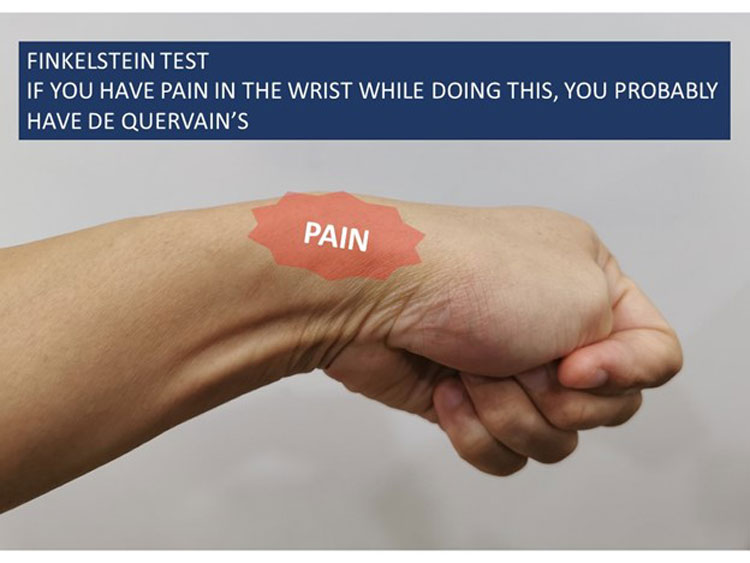
What Causes DeQuervain’s Tenosynovitis?
DeQuervain’s Tenosynovitis in most people is a repetitive strain injury. Most cases of DeQuervain’s result from chronic overuse of the wrist, especially in jobs that require repeated use of the hand and wrist. It is caused by frequent wringing actions and movements that load the wrist while it is held in slight flexion and tilted towards the body. The most common cause of this in the past was washing and wringing clothes, giving rise to it being called “washerwoman’s sprain”. These days, the most common cause is carrying a baby and pumping milk for breastfeeding, and it is now commonly known as “mummy thumb”.
Other causes are direct injury to the wrist resulting in scar tissue that restricts tendon movements, inflammatory arthritis, or poor hand posture when typing and using a mouse for long hours daily. Doing housework with a lot of wringing and scrubbing also can cause it. You may not associate it with these activities, because the thickening builds up slowly over time until it is bad enough to notice. Usually this takes years or decades, although occasionally it can happen soon after a twisting sprain to the wrist or after doing a lot of housework.
It is most common in first time mothers or grandmothers, and in people between 40-60 years of age. It may also appear in the late stage of pregnancy due to hormonal changes and water retention.
